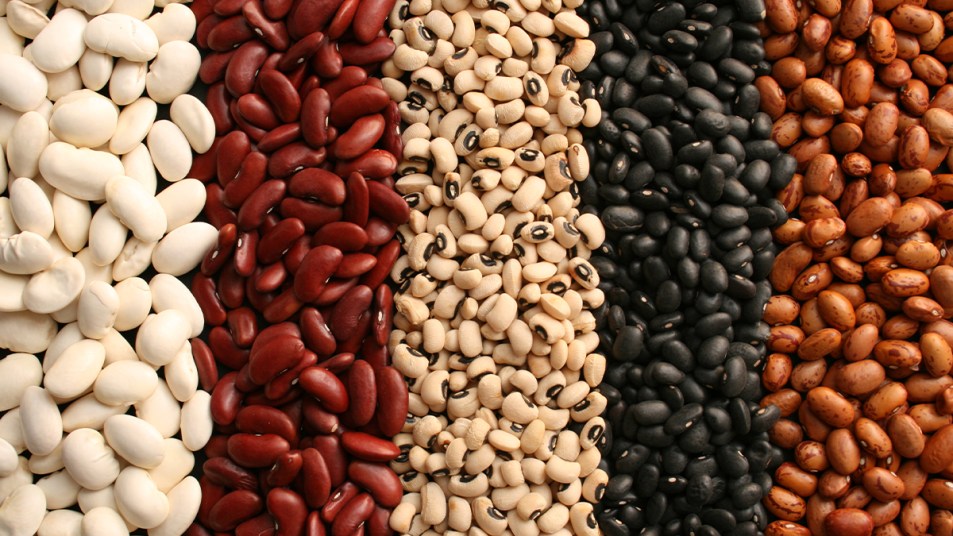Eating More of These Legumes Can Help Prevent Diabetes

While food scientists span the globe in search of the next big superfood, findings at Purdue University in West Lafayette, Indiana, point to a diet darling decidedly closer to home: legumes. The beans, peas, and lentils hiding in our pantries deliver powerful perks for weight loss and preventing diabetes.
Researchers assigned one group of dieters to a low-calorie plan that included an average of 1/2 cup of legumes daily, and another group to a standard low-calorie diet. By the end of the 6-week study, those who filled their plates with legumes had lost 275 percent more weight, plus showed significant improvements in key health markers compared with the control group.
“Legumes contain antioxidants and phytochemicals that make them an effective tool for weight loss,” affirms Gerard Mullin, MD, an associate professor at the Johns Hopkins University School of Medicine in Baltimore. In fact, the fiber, protein and phytonutrients in these superfoods have powerful metabolic effects.
Block Calorie Absorption
Legumes (as well as their cousins, nuts, and seeds) contain soluble fiber that sops up fluid in the stomach and forms a gel. As this gel moves through the GI tract, it traps carb and fat molecules and sweeps them out of the body. According to USDA researchers, the fiber in legumes, nuts and seeds can block hundreds of calories per day from being absorbed and stored as fat. Another boon: “These extraordinary plant foods contain alpha-amylase inhibitors — chemicals that reduce the activity of an enzyme involved in the rapid breakdown of food into simple sugars,” notes Dr. Mullin, author of The Gut Balance Revolution (Buy on Amazon, $16.99). This in turn slows the release of sugars into the bloodstream, further helping to prevent carbohydrates from being stored as fat.
Calm Cellular Inflammation
Legumes, nuts and seeds are rich sources of antioxidants that neutralize the body-wide inflammation that has been linked to increased fat storage, heart disease, and diabetes. “These antioxidants are anti-aging and disease-fighting,” affirms Dr. Mullin. Indeed, a study in The Journal of Nutrition showed that regular bean and nut consumption can dial down inflammatory markers by as much as 40 percent, other research finds that eating just 1/4 cup of legumes a day prevents diabetes for 50 percent of women.
Reduce Hunger Hormones
“Legumes are a rich source of fiber and protein, which move through your digestive tract slowly,” says Dr. Mullin. “And delaying stomach emptying keeps fullness hormones more steadily elevated for longer.” The payoff: Dutch researchers found that enjoying a drink enriched with pea protein boosted satiety for 4 hours longer than a drink made with whey protein (which is considered the gold standard for reducing hunger).
How to Get the Perks
All it takes to start slimming with legumes is incorporating 1/2 to 1 cup into your daily diet. Try adding black beans or lentils to soups and stews and baking with chickpea and nut flours. While most women can add the recommended amount of legumes to their diet with little to no GI issues, Dr. Mullin acknowledges that if you’re currently eating a low-fiber diet, you may want to ease in by enjoying 1/4 cup daily and work your way up to 1 cup. “It also helps to soak dried beans for a few hours or rinse canned beans before you cook them,” he advises. “This makes beans easier to digest.” If you find that beans still make you bloated, take a digestive enzyme like Enzymedica Digest Capsules (Buy on Amazon, $24.74) 30 minutes before your bean-rich meal.
Replacing half a daily serving of bread, rice or potatoes with 1/2 cup of legumes (like lentils, beans, peas, or chickpeas) lowers diabetes risk by 51 percent, according to a study of 3,349 people in the journal Clinical Nutrition. Study author Jordi Salas-Salvadó, MD, PhD, credits legumes’ hefty fiber content (½ cup boasts 7 grams) and anti-inflammatory polyphenol compounds for preventing post-meal blood-sugar spikes linked to insulin resistance.
This article originally appeared in our print magazine, Reverse Diabetes (Buy on Amazon, $12.99).













